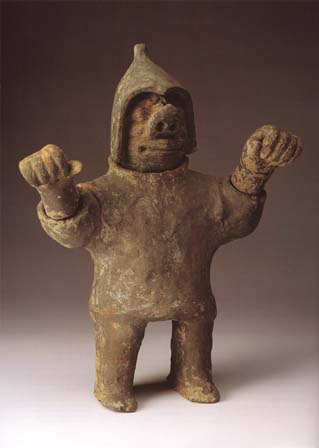Clarity,
Office 17622,
PO Box 6945,
London.
W1A 6US
United Kingdom
Phone/ Voicemail:
+44 (0)20 3287 3053 (UK)
+1 (561) 459-4758 (US).

This detail is really interesting - do you have a source for it? (It's not included in the English language version of the story at the site you mentioned.)A pig painted with mud on the back and a cart fully loaded with ghosts are what Shang Kang (少康) had seen on the night when he was on the way to the Yu Yu tribe.
Hilary:This detail is really interesting - do you have a source for it? (It's not included in the English language version of the story at the site you mentioned.)
CHINESE STORIES
PREHISTORIC CHINA
THREE DYNASTIES
THE SPRING AND AUTUMN PERIOD
STORIES FROM CLASSICAL ALLUSIONS
From: Global Chinese Language And Culture Center Online

«After Emperor Ch'i of the Hsia dynasty died, the throne was passed down to his son, T'ai-k 'ang. T'ai-k 'ang enjoyed hunting and didn't attend to governmental matters. In the end, he was defeated by Hou-i, the chieftan of the Yu-ch'ung tribe. After he fled, Hou-i put T'ai-k'ang's younger brother, Chung-k'ang, on the throne and kept the power in his own hands.
Hou-i was the earliest and most famous archer in Chinese history. His wife was the legendary Ch 'ang-o, a beautiful woman. Hou-i was very ambitious and, waiting until Chung-k'ang died and his son, Hsiang, had succeeded to the throne, Hou-i chased Hsiang out and took the throne himself. However, he did not manage
the government well. He trusted a high minister named Han Chou, who was particularly adept in flattery, and handed over control of the military to him.
This resulted in Han Chuo fomenting a rebellion, killing Hou-i, and making
himself emperor. Han Chuo couldn't stop worrying about Hsiang, fearing that one day Hsiang would return and contend with him for the throne. Therefore, he sent his two sons to kill Hsiang. At that time, Hsiang's wife was pregnant. Fortunately, she fled and returned to her family in the tribe of Yu Nai where she gave birth to a son, Shao-k 'ang.
After Shao-k'ang grew up, he was unsettled and roamed about. He finally threw in his lot with the Yu Yu tribe. The chieftan of the Yu Yu tribe gave him his daughter in marriage, and he also gave him ten li of land. Thereafter, Shao-k 'ang secretly summoned the loyal people of the Hsia dynasty, gathering altogether five
hundred men. Day and night, Shao-k'ang drilled his troops, preparing to recover the Hsia dynasty.
In 2079 B.C., Shao-k'ang was adequately prepared and launched his military reprisal, destroying Han Chuo and his sons. He recovered the throne and re-established the Hsia dynasty. Therefore, in the histories, this story is called The Restoration of Shao-k'ang. »
From: Global Chinese Language And Culture Center Online
at: http://edu.ocac.gov.tw/ocac_ebook/e-show-chap.asp?chap=100041-001-0004
...That's the part that doesn't mention muddy pigs and ghost chariots ... .

Clarity,
Office 17622,
PO Box 6945,
London.
W1A 6US
United Kingdom
Phone/ Voicemail:
+44 (0)20 3287 3053 (UK)
+1 (561) 459-4758 (US).